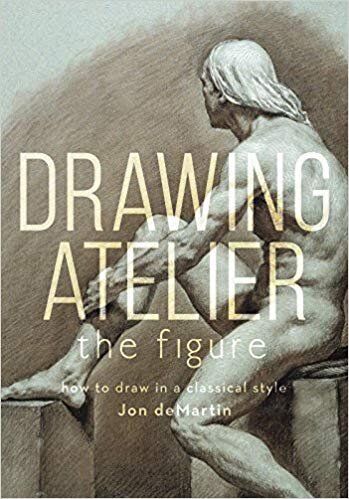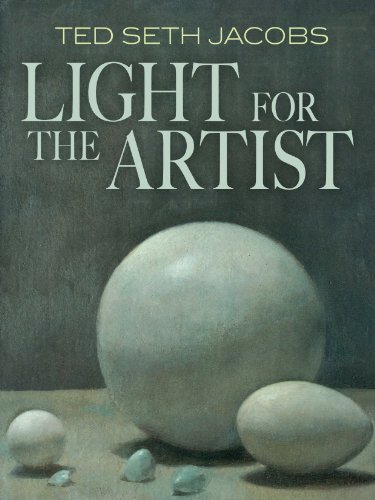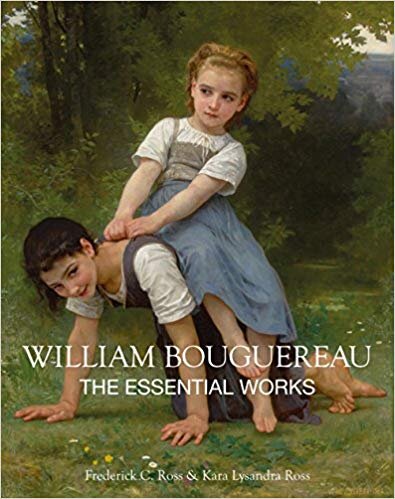"As an Amazon Associate BACAA earns from qualifying purchases."
The practice of drawing…distilled to its essential elements. The companion DVD enclosed inside, beautifully filmed in Florence, Italy, provides real-time drawing lessons so that any gaps in the learning process are filled in with live instruction.
In this elegant and inspiring primer, master contemporary artist and author Juliette Aristides breaks down the drawing process into small, manageable lessons; introduces time-tested principles and techniques that are easily accessible; and shares the language and context necessary to understand the artistic process and create superior, well-crafted drawings.
Arguably the most challenging of subjects for the artist, the human figure also offers opportunities for works of incredible beauty and complexity. In this book, one of today's leading figurative artists shares techniques and approaches for drawing the human form. With a reverent grounding in the methods of the Old Masters and keen perspective developed over Jon DeMartin's 20+ years of making and teaching art, this comprehensive workshop focuses on the power of line and how it can be used to achieve a convincing sense of dimension and life.
Intermediate and advanced art students receive a broad vocabulary of effects with this in-depth study of light. Topics include basics, use of light to define form and space, field effects, colored light, and many other subjects. Diagrams and paintings illustrate applications of principles to figure, still life, and landscape paintings.
Heralded as a revolutionary right-brain approach to figure drawing, this guide focuses on mentality rather than technique. The author presents personal reflections and advice on drawing what the eye sees instead of what the mind dictates. More than 180 black-and-white drawings and eight pages of color illustrations reinforce such concepts as light, balance, and symmetry. This revolutionary "right brain" approach to drawing teaches artists to see things as shapes rather as nameless objects.
Heralded as a revolutionary right-brain approach to figure drawing, this guide focuses on mentality rather than technique. Ted Seth Jacobs offers personal reflections and advice on developing the ability to draw what the eye sees rather than what the mind dictates. More than 180 black-and-white drawings and eight pages of color illustrations reinforce his insights into such concepts as light, balance, and symmetry.
Jacobs' mental approaches include drawing as a philosophical expression, encouraging the mind and body to work together, and cultivating a relaxed but attentive mood. His observations on figure drawing range from the portrayal of forms in action and at rest to draped effects; and he explores the nature of shadow, reflected light, and other light-related issues. Above all, he encourages readers to challenge all assumptions about drawing and painting. A valuable teaching tool for students, this volume is also an excellent reference for professionals and amateurs.
The author, Ted Seth Jacobs, began teaching sixty-five years ago as an occasional substitute for his teacher at the Art Students League of New York. After completing four intensive years there he continued teaching privately. Thirty years later he returned to have his own class at the League. Additionally, he taught at the New York Academy and in 1987 opened his own school in France. Over the years, Mr Jacobs became acutely aware of the lack of structural knowledge of art students. He realized that there was a great need to understand the structural organization of the body. It was apparent that after the predominance of non-figurative styles it had become very difficult to find any in-depth teaching of structure. The Dictionary of Human Form is designed to fill that need. Of course, the infinite variety of body actions, light directions, and angles of view cannot be contained between the covers of any one book. However with over eight-hundred explanatory pages and over two thousand illustrations, the reader can develop a structural way of seeing and understanding the body. The understanding of structure is the artist's vocabulary of form. Without it the art will be weak and over simplified. With a structural vocabulary you will be able to freely express your vision through images of the body. Nothing like the Dictionary has ever been published. We live in the Information Age. It is necessary for figurative art to catch up and evolve into a contemporary figurative vision.
Many of us want to learn “how to draw.” But as artist Anthony Ryder explains, it’s much more important to learn what to draw. In other words, to observe and draw what we actually see, rather than what we think we see. When it comes to drawing the human figure, this means letting go of learned ideas and expectation of what the figure should look like. It means carefully observing the interplay of form and light, shape and line, that combine to create the actual appearance of human form. In The Artist’s Complete Guide to Figure Drawing, amateur and experienced artists alike are guided toward this new way of seeing and drawing the figure with a three-step drawing method.
The figurative paintings and drawings of Steven Assael compels us to reach beyond our preconceptions of representation and the body; his hand captures those temporal nuances missed by the camera's mechanical limits. His portrait drawings are often of single figures, exactingly rendered and usually without background or setting. What remains is a near-surgical analysis of the subject. Working in ink and pencil, Assael astounds us with his technical ability, proving that care and skill are still vital elements of great art.
Discover how top artists from around the world get their ideas and execute them with this beautiful showcase book of 140+ drawings in charcoal, pencil, pastel, colored pencil, scratchboard, pen and ink, and more selected from thousands of competition entries. Strokes of Genius 11 follows the ongoing story of contemporary drawing by focusing on the theme "Finding Beauty," with comments from the artists offering fresh-from-the studio advice, insights and anecdotes not found anywhere else. Artists and art lovers alike are sure to be inspired by the resulting expressions showcased on these pages.
Atelier education is centered on the belief that working in a studio, not sitting in the lecture hall, is the best place to learn about art. Every artist needs to learn basic drawing skills.
In this elegant and inspiring workbook, master contemporary artist and best selling author Juliette Aristides breaks down the drawing process into small, manageable lessons; presents them progressively; introduces time-tested principles and techniques in the Atelier tradition that are easily accessible; and shares the language and context necessary to understand the artistic process and create superior, well-crafted drawings. What makes this approach unique is the fact that it includes blank pages for copying and practicing within each lesson, facilitating traditional Atelier methods.
With the same direct, easy-to-follow approach of Juliette Aristides's previous books, Lessons in Classical Painting presents aspiring artists with the fundamental skills and tools needed to master painting in the atelier style. With more than 25 years of experience in ateliers and as an art instructor, Aristides pairs personal examples and insights with theory, assignments and demonstrations for readers, discussions of technical issues, and inspirational quotes. After taking a bird's eye look at painting as a whole, Aristides breaks down painting into big picture topics like grisaille, temperature, and color, demonstrating how these key subjects can be applied by all painters.
In this elegant and inspiring workbook, master contemporary artist and author Juliette Aristides breaks down the figure drawing process into small, manageable lessons, presents them progressively, introduces time-tested principles and techniques in the atelier tradition that are easily accessible, and shares the language and context necessary to understand the artistic process and create superior, well-crafted drawings.
Students of art hailed Classical Drawing Atelier, Juliette Aristides’s first book, as a dynamic return to the atelier educational model. Ateliers, popular in the nineteenth century, teach emerging artists by pairing them with a master artist over a period of years. The educational process begins as students copy masterworks, then gradually progress to painting as their skills develop. The many artists at every level who learned from Classical Drawing Atelier have been clamoring for more of this sophisticated approach to teaching and learning. In Classical Painting Atelier, Aristides, a leader in the atelier movement, takes students step-by-step through the finest works of Old Masters and today’s most respected realist artists to reveal the principles of creating full-color realist still lifes, portraits, and figure paintings. Rich in tradition, yet practical for today’s artists, Classical Painting Atelier is ideal for serious art students seeking a timeless visual education.
Ateliers have produced the greatest artists of all time—and now that educational model is experiencing a renaissance. These studios, a return to classical art training, are based on the nineteenth-century model of teaching artists by pairing them with a master artist over a period of years. Students begin by copying masterworks, then gradually progress to painting as their skills develop. Classical Drawing Atelier is an atelier in a book—and the master is Juliette Aristides, a classically trained artist. On every page, Aristides uses the works of works of Old Masters and today’ s most respected realist artists to demonstrate and teach the principles of realist drawing and painting, taking students step by step through the learning curve yet allowing them to work at their own pace. Unique and inspiring, Classical Drawing Atelier is a serious art course for serious art students.
William Bouguereau: The Essential Works, Frederick C. Ross and Kara Lysandra Ross
• Showcases the work of a realist artist whose work is enjoying a revival
• Explores Bouguereau's work in new depth, with expert insight into his most important paintings
William Bouguereau, the most popular artist in nineteenth-century France, is rapidly becoming one of the most popular realist artists of all time. This book is an exploration of the four main types of paintings that were most prevalent throughout Bouguereau's body of work. This includes his mythological works, religious works, peasants, and portraits. This final section on portraits focuses on paintings of heads and hands, which gave the artist the opportunity to concentrate on the subtleties of capturing human emotion, something at which the artist was a consummate master, and is a primary factor in what makes his works, in general, so compelling.
A luxury two-volume set in a slipcase, which showcases all of Bougereau's known paintings as well as a comprehensive biography; this new edition includes a chapter devoted to one of Bouguereau's most remarkable works, and features improved color images throughout
The first edition, ISBN 9781851496129, sold out within a year of publication; this new edition has been published to satisfy overwhelming demand.
William Bouguereau (1825-1905) was a highly important and influential French academic painter, who taught a long succession of gifted students, primarily at the private Académie Julien in Paris.
Paul Delaroche’s works were heralded as masterpieces in the nineteenth century, and the man himself was lauded in 1853 by one Italian critic as “at the summit of all living painters.” But while his paintings themselves are still familiar to many, Delaroche the artist fell into almost total obscurity during the twentieth century. Stephen Bann addresses this lacuna in art scholarship, presenting an in-depth examination of Delaroche’s career.
Bann situates Delaroche and his wide-ranging oeuvre in the context of early nineteenth-century visual culture. From his early historical paintings to experimental pieces influenced by photography, the book analyzes each stage of Delaroche’s artistic development—as well as his major masterpieces such as The Execution of Lady Jane Grey and The Princes in the Tower. Bann also analyzes the numerous reproductions of Delaroche’s works in a variety of visual mediums, including engravings by Mercuri and Henriquel-Dupont, lithographs, popular prints, and the photographs that illustrated Delaroche’s first retrospective catalog.
Frederic, Lord Leighton was the most prominent painter of Victorian England's artistic renaissance. His works combine the grand academic style with a sensuous delight in the human form and a feeling for colour and light. Leighton created the most elaborate figurative paintings of mythological, historical and literary subjects, as well as landscapes influenced by his European upbringing and training. As a powerful president of the Royal Academy, his passionate interest in painting revitalized British art in the nineteenth century and marks his out as a genius of his age. This monograph provides a commentary on Leighton's career and a gallery of the artist's finest works.
Painter and sculptor Frederic, Lord Leighton is one of the foremost artists of the Victorian classical school. His masterpieces featuring mythological subjects are thought to be the inspiration behind the nineteenth-century craze for all things greek.
This monograph includes more than one hundred beautiful reproductions of Leighton's work along with an exploration of the role that classicism played in his paintings. In addition to his art, the book examines the architectural wonders of Leighton House, the artist's opulent Victorian residence in London.
Frederic Leighton (1830-1896), the eminent Victorian painter and sculptor, was the first president of the Royal Academy and the first artist made a lord. Now, to commemorate the 100th anniversary of his death, the Royal Academy will hold a major exhibition, to which this book serves as a catalogue. Included are 128 color plates, additional illustrations, and never-before-seen photographs.
This important re-evaluation of the Dutch- born painter Lawrence Alma-Tadema traces his personal and artistic journey towards international fame and success in London and investigates how this exceptionally creative artist used his own houses and studios as laboratories to produce vivid paintings of life in ancient Greece, Rome, and Egypt. Lawrence Alma-Tadema’s paintings were immensely popular among his contemporaries, and have since enchanted a wide audience through the medium of cinema. Anyone who has ever enjoyed the great epic films of antiquity—from Italian silent classics and Cecil B. DeMille to Ridley Scott’s Gladiator—will instantly recognize their origins in sets and costumes Alma- Tadema invented.
Lawrence Alma-Tadema was born in the Netherlands but spent most of his adult life in England, becoming a member of the Royal Academy and later gaining a knighthood. He was the quintessential Classicist painter, taking many of his themes from Greek and Roman Mythology. His work has a rich dream-like quality which is well illustrated in this book.
With his grand scale and richly colored canvases and studies, John William Waterhouse (1849-1917) was one of the most influential painters of the 19th century. In this brilliantly illustrated survey, edited by a leading Waterhouse scholar, the painter's seductive vision of femininity is captured in sumptuous reproductions and illuminated by an engaging and informative text.
Published to accompany an important exhibition of the artist's work, the book explores Waterhouse's creative responses to such contemporary concerns as medievalism, the classical tradition, and spiritualism. A comprehensive examination of his life and work, including his well-known painting The Lady of Shallott, this volume explores also the artist's connection to the Pre-Raphaelite Brotherhood and his engagement with French art of the period.
Anatomy for the Artist, Sarah Simblet (Author), John Davis (Photographer)
This visually striking guide takes a fresh approach to drawing the human body. A combination of innovative photography and drawings, practical life-drawing lessons, and in-depth explorations of the body’s surface and underlying structure are used to reveal and celebrate the human form.
Combining specially-commissioned photographs of models with historical and contemporary works of art and her own dynamic life drawing, Sarah leads us inside the human body to map its skeleton, muscle groups, and body systems. Detailed line drawings superimposed over photographs reveal the links between the body’s appearance and its construction. Six drawing classes show how to observe different parts of the body and give expert guidance on how to draw them. Inspirational master classes on famous works, ranging from a Michelangelo study to a Degas painting, show how artists have depicted the human body over the centuries. Each master class includes a photograph of a model holding the same pose as in the painting, to highlight details of anatomy and show how the artist has interpreted them.
Understanding anatomy is the key to drawing the human body successfully. As well as being the perfect reference, Anatomy for the Artist will inspire you to find a model, reach for your pencil, and start drawing.

























